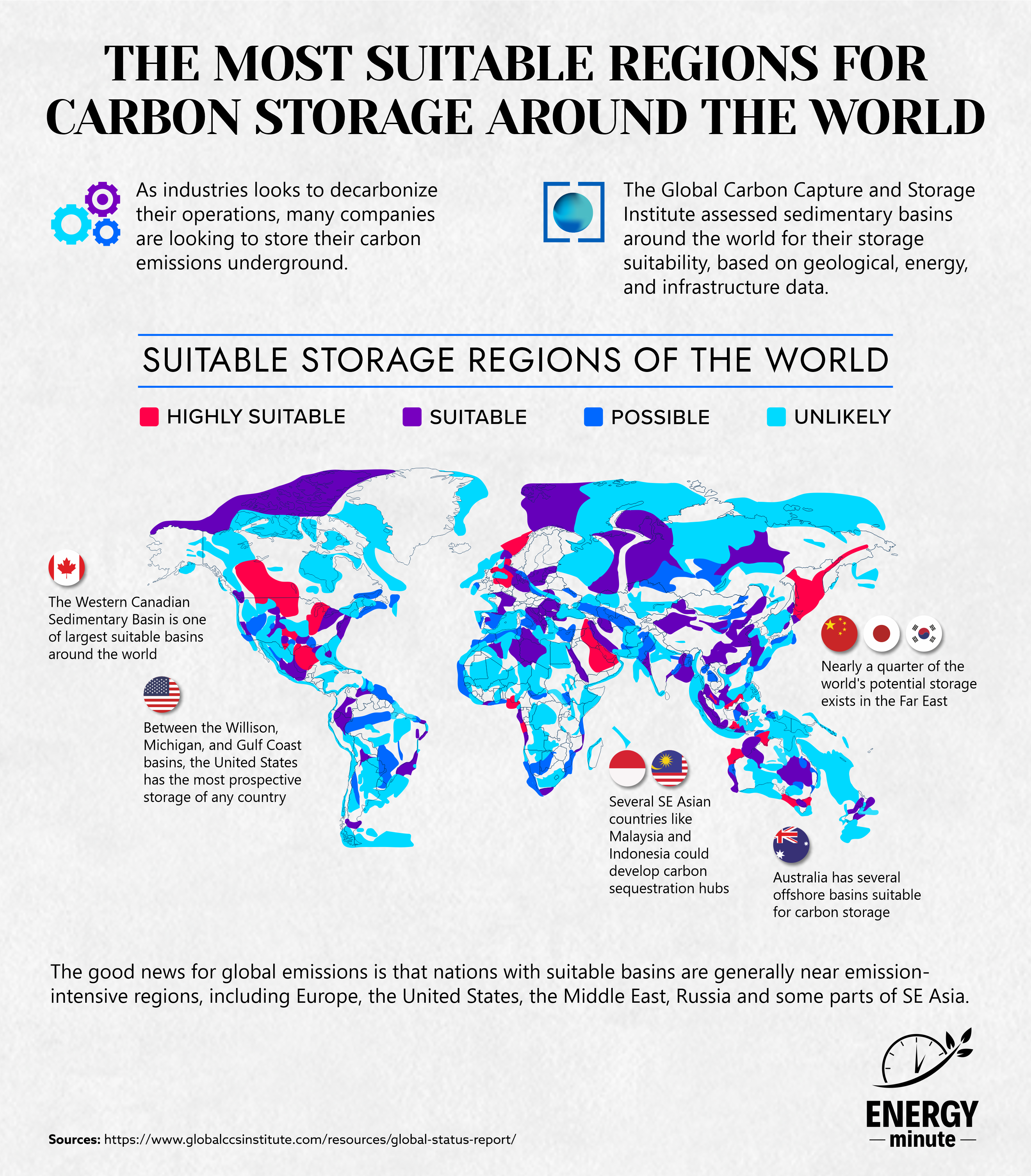The Most Suitable Regions for Carbon Storage Around the World

As industries looks to decarbonize their operations, many companies are looking to store their carbon emissions underground. The Global Carbon Capture and Storage Institute assessed sedimentary basins around the world for their storage suitability, based on geological, energy, and infrastructure data.
Subsurface carbon storage, also known as carbon capture and storage (CCS), involves capturing carbon dioxide (CO2) emissions from industrial processes or power generation and storing them deep underground in geological formations. The suitability of a region for subsurface carbon storage depends on several factors, including:
§ Geology: The region must have suitable geological formations, such as deep saline aquifers, depleted oil and gas reservoirs, or unminable coal seams, that are capable of securely trapping and storing the CO2 over long periods of time.
§ Distance to sources of CO2 emissions: The region should be located near large sources of CO2 emissions, such as power plants, industrial facilities, or other large emitters, to minimize the cost and energy required to transport and store the CO2.
§ Infrastructure: The region must have the necessary infrastructure, such as pipelines and injection wells, to transport and inject the CO2 into the subsurface formations.
§ Environmental considerations: The region should be located away from sensitive environmental areas, such as aquifers used for drinking water, to avoid any potential negative impacts on the environment or human health.
§ Regulatory framework: The region should have a clear regulatory framework in place that governs the permitting, monitoring, and verification of subsurface carbon storage projects, to ensure that they are safe, environmentally sound, and comply with all applicable regulations and guidelines.
Overall, a region suitable for subsurface carbon storage must have a combination of geologic, economic, and regulatory factors that support the safe and effective storage of CO2 emissions.
Suitable Storage Regions of the World
§ Canada:
The Western Canadian Sedimentary Basin is one of largest suitable basins around the world
§ United
States: Between the Willison, Michigan, and Gulf Coast basins, the United States has the most prospective storage of any country
§ Australia:
Australia has several offshore basins suitable for carbon storage
§ Southeast Asia: Countries like Malaysia and Indonesia could develop carbon sequestration hubs
§ The Far East: Nearly a quarter of the world’s potential storage exists in China, Japan and South Korea.
The good news for global emissions is that nations with suitable basins are generally near emission-intensive regions, including Europe, the United States, the Middle East, Russia and some parts of SE Asia.
Sources:
https://www.globalccsinstitute.com/resources/global-status-report/
air jordan 1 royal nike outlet | Nike Air Max 1 Ultra Moire University Red 1 Ultra Moire University Red 2 Terra Blush AJ6599 – Nike Air Max 1 Ultra Moire University Red – 201 Release Date , IetpShops



